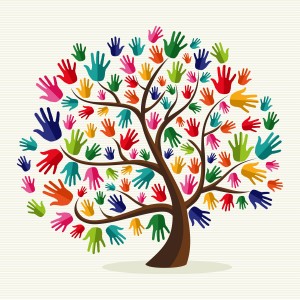When individuals face tensions in their relationships, either professional or personal, there’s a tendency to complain about others and expect them to change. By doing that, we are giving our power away. We are giving the others the power to make us fe el good or not: “He makes me angry”. However, by taking responsibility, by being aware that we are always at choice we feel empowered
el good or not: “He makes me angry”. However, by taking responsibility, by being aware that we are always at choice we feel empowered
We have no control over other people and cannot make them change, for that reason it is a waste of time to try and change the others. Nevertheless we can always choose how we deal with a situation, how it affect us and what we take from it. For instance:
- We can choose to stay victims of the circumstances, or we can choose to feel empowered
- We can choose to blame and judge, or to be curious and compassionate
- We can choose to ignore, or we can choose to be aware
- We can choose to do nothing, or we can choose to take action
- We can choose to be numb, or we can choose to be open and vulnerable, in favor of connection
Furthermore, the more we work on ourselves, the more we choose, the more we will be influencing what surrounds us.
Below are some helpful questions to start working on ourselves, they are grouped by types of relationships:
a) Leadership: How am I doing as a leader? What’s my impact? Do I have a clear vision? How well do I communicate it? Are people engaged with this vision? Do I trust my team? Do they trust me?
b) Parenting: How am I with my children? Do I listen? Am I checking my emails or doing something else while we’re together? What’s truly important for me? What’s important for my children?
c) Couples: Are you spending quality time together with your spouse? What’s wanting to happen in this relationship? How am I communicating? How committed am I? Do I know my spouse’s love language? Do I speak it?
d) In general: What is it that you really want? What’s stopping you? What are your core beliefs around that? What are your patterns? What can you do to start changing them?
In any of the above, no matter what the answers are, remember, you are always at choice, all starts with you.



